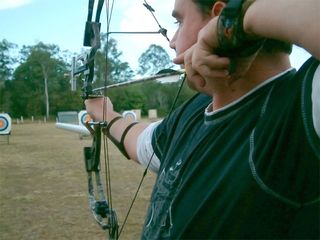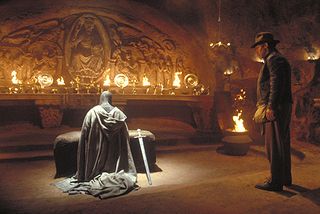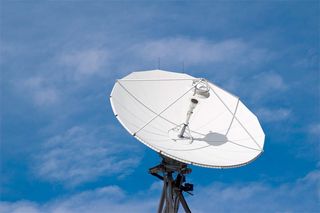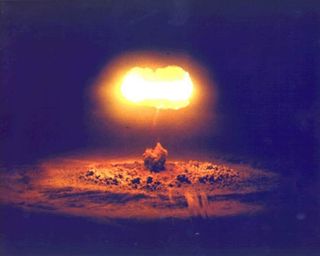Fight, Fight, Fight: The History of Human Aggression
The Evolution of Fighting

The use of weapons may date back well before the rise of humanity, given evidence that even our closest living relatives, the chimpanzees, can use spears to hunt other primates. To see how fighting evolved from hand-to-hand combat to world war, here are 10 major innovations that revolutionized combat.
The Arrow

The earliest hints of arrows found yet — bone points from Sibudu Cave in South Africa — suggest these weapons might date back more than 60,000 years. The bow and arrow revolutionized warfare by enabling one to launch attacks from a distance with far less risk to the attacker. Although the crossbow often superseded hand bows in medieval armies since it took less training to use and could have greater penetrating power, in the right hands the longbow could achieve a faster shooting rate for devastating effect, as the battles of Crecy in 1346 and Agincourt in 1415 revealed. After millennia of use, the advent of firearms eventually made the arrow obsolete in war.
The Horse

More than once, horses changed the face of world history. The strong backs of horses helped carry medieval knights in heavy armor, and their swift legs helped Alexander the Great to conquer most of the world as he knew it and the Mongols to forge the largest contiguous empire in the history of the world. Their extraordinary capabilities of cavalry led to the evolution of long spears that could ward them off, such as the sarissa of the Macedonians or the pikes of the Swiss and the Scots.
The Sail

In myth, the sail is what really launched a thousand ships of Greeks to fight against Troy. In addition to bringing soldiers to distant shores for war, battles and disasters at sea have been pivotal in the course of world events, such as the Battle of Salamis, where the Greeks defeated a much larger invading Persian fleet, and the failed invasions of Japan by two Mongol fleets, which storms dubbed kamikaze or "divine wind" destroyed. The Age of Sail saw bitter conflict between rising empires as well as pirates hunting for profits. The history of naval warfare continues today with warships and submarines.
Armor

At the Battle of Thermopylae, heavy armor helped the greatly outnumbered Greek phalanxes to hold off the lightly armed Persian infantry over three days of battle. The evolution of war has often been driven by the contest between arms and armor, leading to extraordinary developments such as the full plate steel armor of Europe. Nowadays personal armor can help stop bullets, and future advances in nanotechnology could lead to armor that absorbs energy from blast waves, deforming in a way similar to crumple zones in cars.
Engineers

In myth, the city of Troy was renowned for its impenetrable walls, and the castles, moats, drawbridges, porticullises and other fortifications that defended settlements and camps in ancient times — as well as the catapults, tunnels and other means used to overcome them — relied on military engineers. The military engineers of the ancient Romans — perhaps the world's first dedicated force of these specialists — created many roads that have survived to the modern day, and the Great Wall of China, built to help protect the empire's northern border, has stood for centuries. Nowadays, military engineers also set up and clear minefields and construct and destroy bridges.
Gunpowder

Gunpowder changed the rules of war. Cannons and explosives were far more effective than prior weapons of siege, blowing away many traditional fortifications. Firearms rendered old suits of armor obsolete. Artillery helped Napoleon conquer most of Europe and changed the face of naval warfare. Machine guns enabled devastatingly high rates of fire, smashing massed infantry. In antiquity, the Chinese used gunpowder in "fire arrows" against Mongol hordes in what may be the earliest known use of rockets in battle. Even now, increasingly deadlier firearms are under development.
The Engine

The engine has transformed the face of warfare, from the early days of steam locomotive troop transports to future electric or hybrid engines lofting up stealthy airborne robots. It has allowed the creation of tanks, subs, planes, warships, copters and robots, drastically changing military tactics and strategy, and led to trucks, jeeps, humvees and armored personnel carriers to transport infantry, supplies and equipment, greatly increasing their mobility. The invention of the airplane also enabled the development of airborne forces that can be deployed behind enemy lines, for critical effect during the Allied invasion of Normandy and for the modern covert insertion of special operations forces.
Radio

The radio has completely revolutionized warfare, helping control large numbers of personnel, vehicles — and nowadays, missiles and robots — over great distances. Radio helped soldiers — and later satellites and robots — report back observations of the enemy. It allowed the broadcast of propaganda to help drive support for war efforts, and once Allied forces cracked the Enigma code system, radio enabled them to eavesdrop on Nazi military communications. Radio also led to radar, which helped detect remote opponents and targets and is often credited with helping Royal Air Force win the Battle of Britain against the much larger German air force during World War II. In turn, this the power of radar has driven advances in stealth aircraft and electronic warfare.
Nuclear Weapons

After the first atom bomb in history, dubbed "the gadget," was detonated in 1945 at the Trinity Site near Alamogordo, N.M., physicist J. Robert Oppenheimer thought of a line from the Hindu scripture the Bhagavad Gita: "I am become Death, the destroyer of worlds." Nuclear weapons later ended World War II. Although they have only had a little more than a half-century of impact on history, the fear of nuclear annihilation has permanently transformed the face of warfare.
Sign up for the Live Science daily newsletter now
Get the world’s most fascinating discoveries delivered straight to your inbox.

